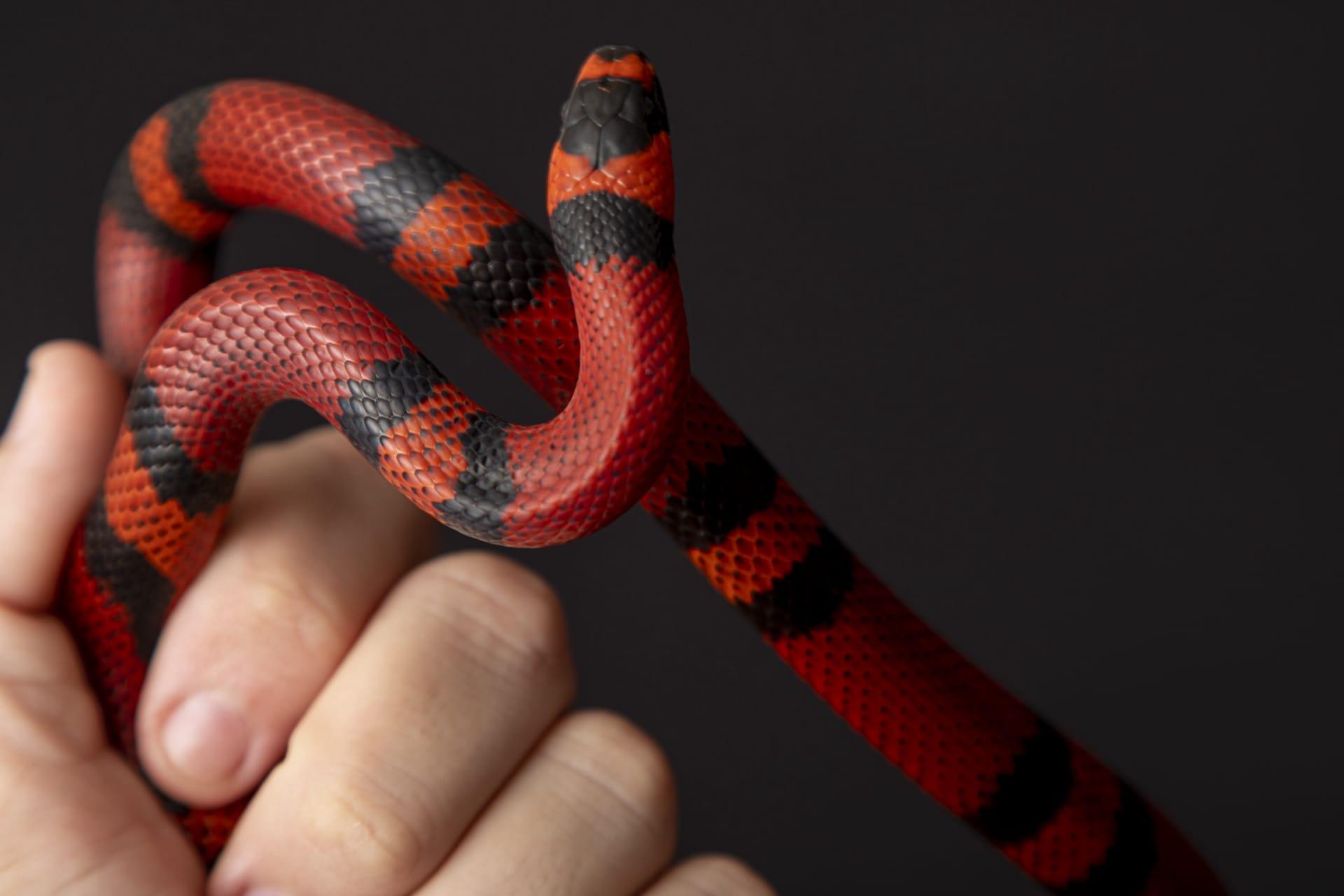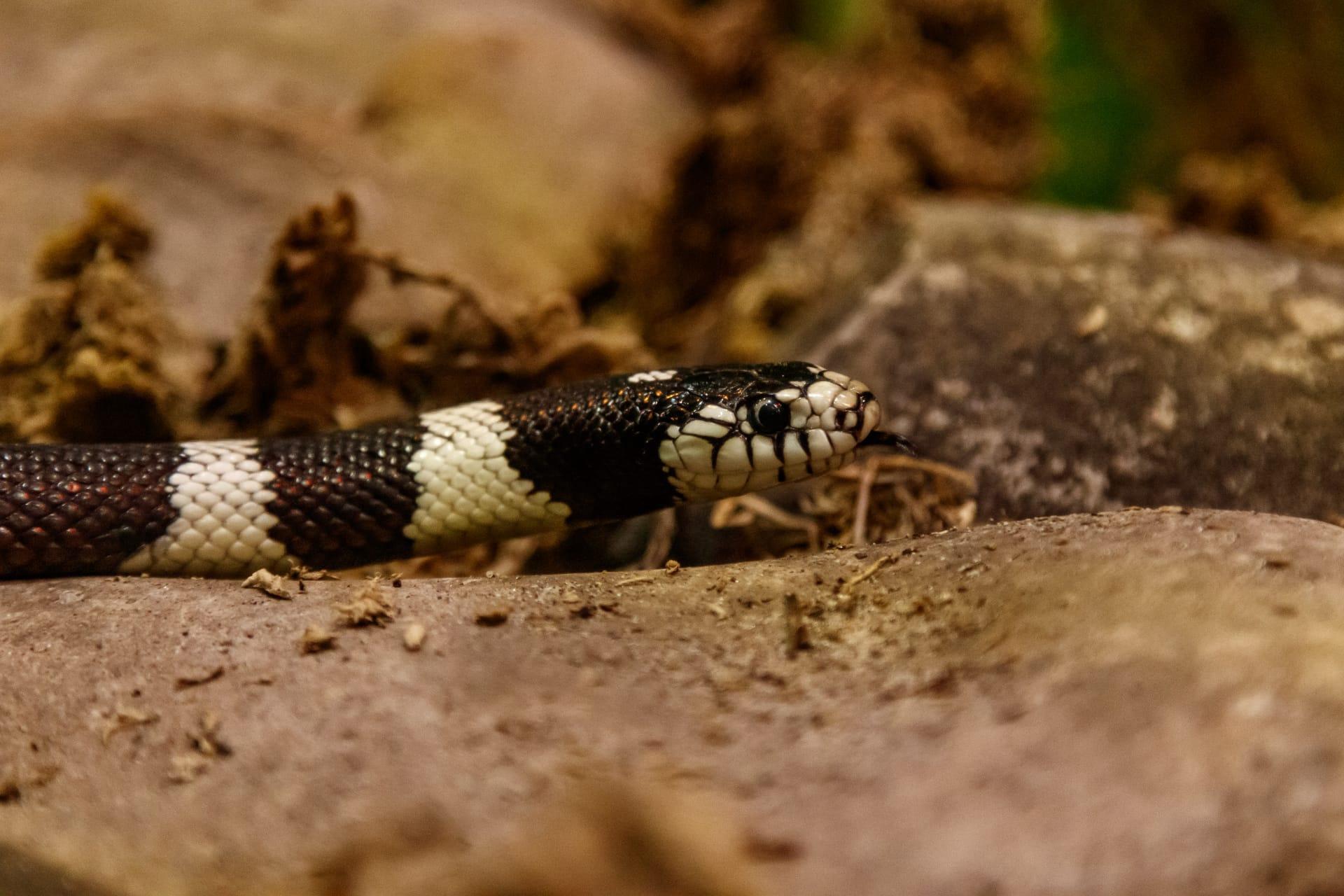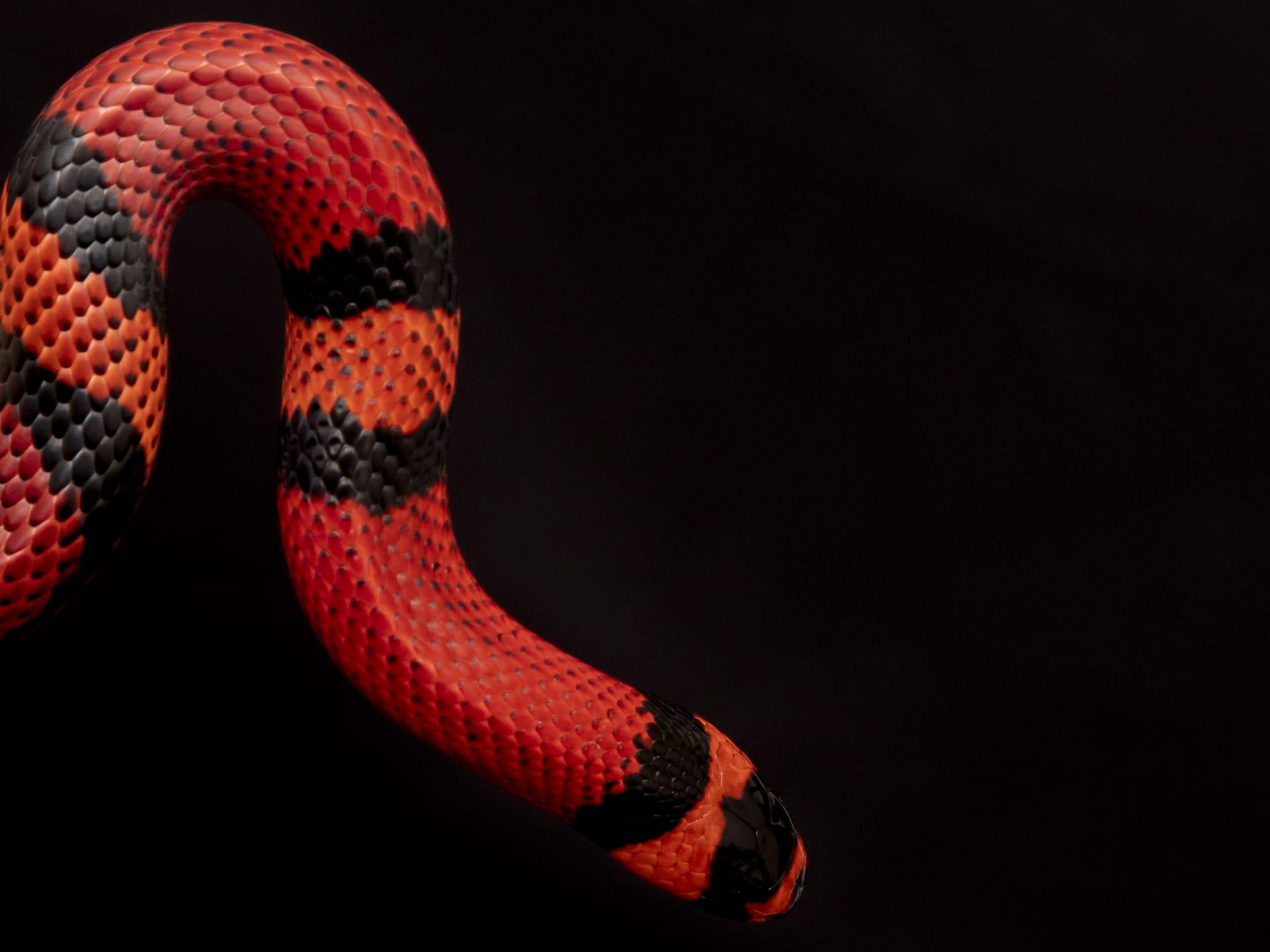King Snake Characteristics
- Home /
- Mini Encyclopedia /
- Animal /
- King Snake Characteristics
1
Kingsnakes, known scientifically as Lampropeltis, are a captivating group of snakes found primarily in the Americas. They exhibit a wide range of sizes, generally measuring between 3 to 6 feet (90 to 180 cm) in length. Remarkably adaptable, these snakes display various color patterns, including bands, stripes, and speckles, which can vary significantly depending on the subspecies. Lifespan is another intriguing aspect of kingsnakes; in the wild, they live for about 12 to 15 years, but under human care, their lifespan can extend up to 20 years or more. Their robust build and distinctive coloration make them one of the most recognized snake species.
One of the most distinctive organs of a kingsnake is its powerful and muscular stomach, enabling it to consume prey larger than its head, a feat not common in many other snake species. This incredible ability is facilitated by their highly flexible jaws and specialized vertebrae, allowing them to swallow prey whole. This adaptation is not just a feeding mechanism but also a defensive strategy, as kingsnakes are known to be ophiophagous - they can prey on and eat other snakes, including venomous ones. Their immunity to the venom of certain snake species is another fascinating aspect, making them a unique predator in their ecosystem.

2
Question: Why are kingsnakes called 'king' snakes?
Answer: The name 'kingsnake' originates from their remarkable habit of eating other snakes, including venomous species. This predatory behavior has earned them the regal title of 'king,' suggesting their dominance over other snakes in their habitat. Their ability to hunt and consume venomous snakes is due to a unique evolutionary adaptation that provides them with immunity to certain types of snake venom. This remarkable trait not only contributes to their name but also highlights their significant role in controlling the population of other snake species within their ecosystem.

3
Kingsnakes are known for their agility and strength, which are key to their movement characteristics. They primarily use lateral undulation, a common movement among snakes, where they propel themselves forward by creating S-shaped curves with their body and pushing off against surfaces. This movement is highly efficient for navigating through their varied habitats, which can range from flat open areas to rugged terrain. Additionally, they are adept at climbing and swimming, showcasing their versatility and adaptability in different environments.
In terms of feeding, kingsnakes have an eclectic diet that includes rodents, birds, eggs, lizards, and other snakes, including venomous ones. They are constrictors, meaning they kill their prey by coiling around it and suffocating it. This method is efficient and allows them to subdue prey quickly and with minimal risk to themselves. Their ability to dislocate their jaws enables them to swallow large prey whole, an impressive feat that is crucial for their survival in the wild.

4
Kingsnakes inhabit a variety of environments, ranging from deserts, grasslands, and forests to wetlands and agricultural areas. They are versatile in their habitat preferences, often found in areas with ample hiding spots like rocks, logs, and dense vegetation. This adaptability to various environments has enabled them to thrive in diverse geographical locations. Temperature and shelter play significant roles in their habitat choice, as they need suitable conditions for thermoregulation and protection from predators.
Reproduction in kingsnakes involves oviparity, where females lay eggs. Mating occurs in the spring, and by early summer, the female lays a clutch of eggs, typically ranging from 5 to 24. These eggs are deposited in warm, moist, and hidden locations to ensure optimal conditions for incubation. After an incubation period of about two months, the eggs hatch, and the young snakes are fully independent from birth. They are equipped with all the necessary skills for survival, including hunting, which they start doing soon after emerging from the eggs.

5
Book: "The Secret World of Kingsnakes" by Dr. Emily Taylor is a fascinating exploration into the life of kingsnakes. Published in the United States in 2018, this book delves into the unique biology, behavior, and ecology of these snakes. Dr. Taylor, a renowned herpetologist, uses her extensive research and field experience to provide readers with an in-depth understanding of kingsnake species across different habitats. The book is filled with vivid photographs, making it both informative and visually appealing.
Book: "Kingsnakes: The Untamed Beauty" authored by Richard D. Bartlett, released in 2020, is another insightful resource. Bartlett, a seasoned naturalist, shares his experiences and observations from years of studying kingsnakes in their natural environments. The book, published in Canada, focuses on the diverse patterns, behaviors, and conservation of kingsnakes. It's a comprehensive guide that blends scientific information with captivating narratives, making it an excellent read for both snake enthusiasts and general readers interested in wildlife.